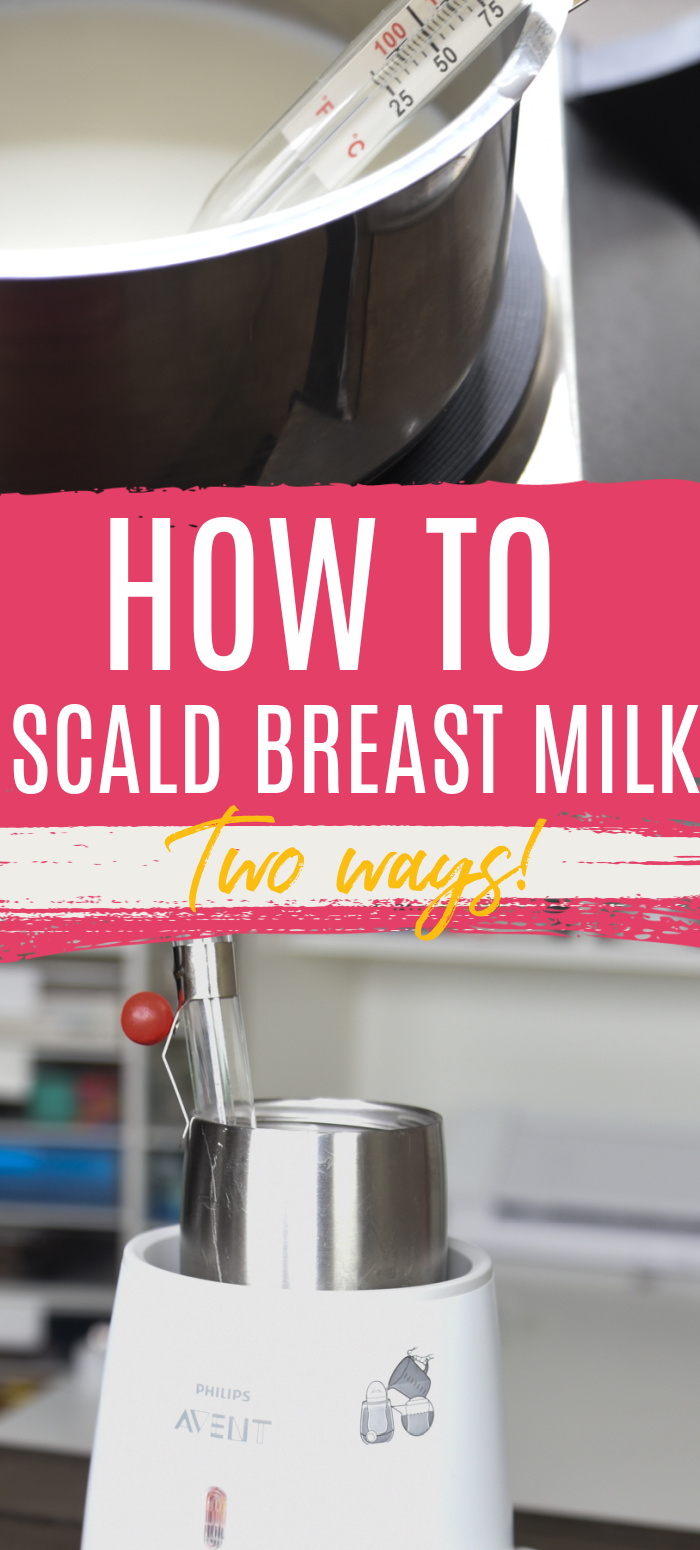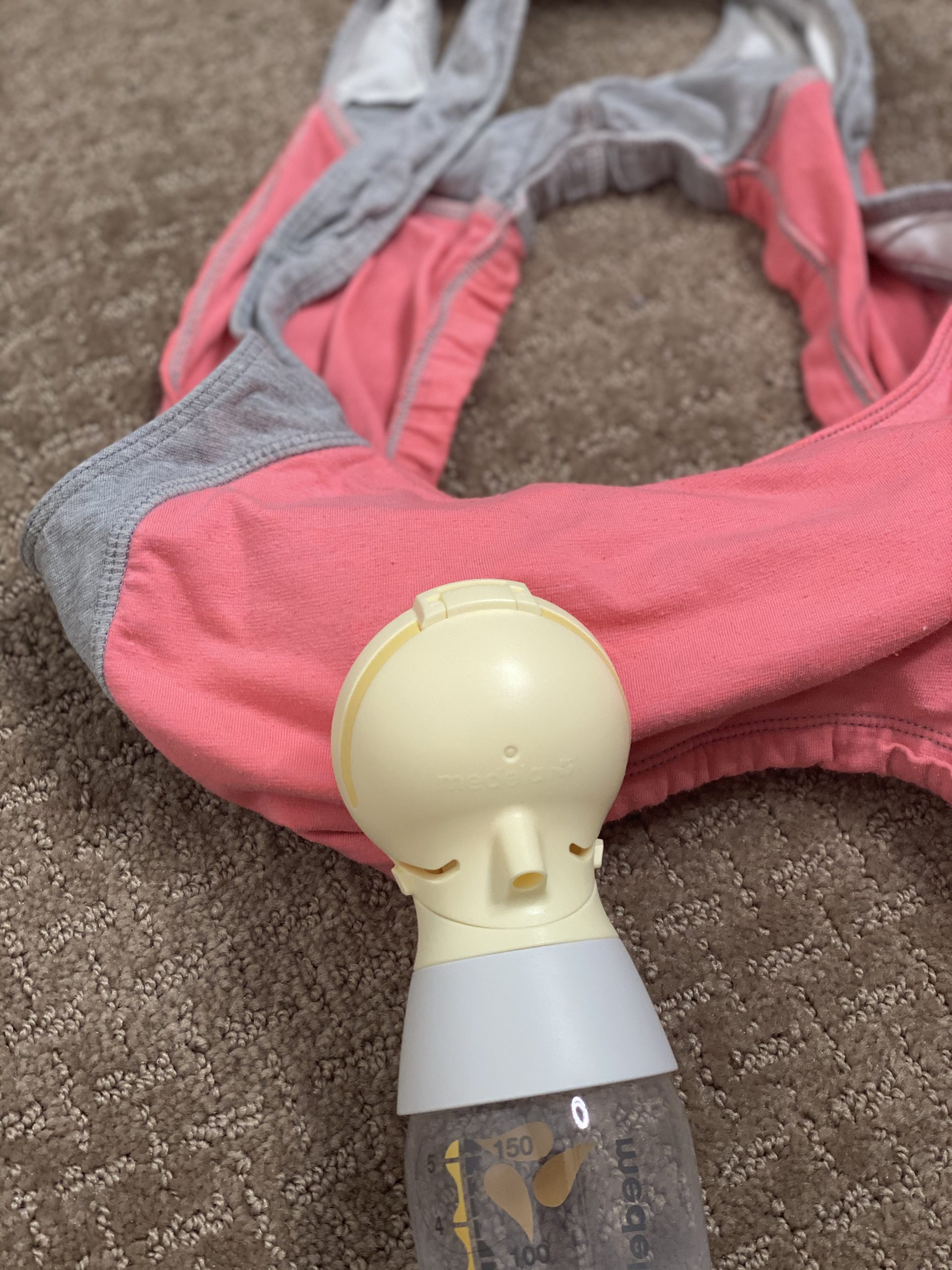C-sections can cause problems with breastfeeding – however, most of them have solutions! Here are seven common breastfeeding problems after a c-section, along with what you can do to solve them!

Whether you are planning on a natural birth or a cesarean section, it’s essential to think about breastfeeding long before your due date.
Preparing to breastfeed in advance could give you higher chances to ensure successful lactation, even if things didn’t go as planned during labor. Nobody is guaranteed they won’t have an emergency c-section, after all.
Research shows that women who have c-sections are less likely to initiate breastfeeding and more likely to supplement with formula pretty quickly after birth. I’m all about moms being able to make the best decisions for their families – and if they want to breastfeed, I think it’s essential to allow a mother to be set up for success, regardless of how she gave birth.
If you want to be prepared to breastfeed – and especially be able to conquer any breastfeeding problems that might come up – grab your spot in Fuss-Free First Year. You’ll learn everything you need to know to breastfeed for as long as you want confidently.
But now – let’s talk about some of the problems that can surface in regards to breastfeeding and c-sections. I think it’s essential to share the issues and the solutions so those are also included!
Problem #1: Problems Due to Anesthesia
There are several types of anesthesia you may receive for a c-section. However, most of them may make you and the baby sleepy and weak.
If you get general anesthesia, the breastfeeding process is usually delayed until it wears off, while in the case of an epidural, you may breastfeed shortly after the surgery.
The good news is that most of the time, you aren’t put under general anesthesia. Your baby may still feel tired from the anesthesia that was given.
SOLUTION!
Dealing with a sleepy baby can be overwhelming, especially if they won’t eat. If you can get your baby to latch, you can try hand-expressing directly into their mouth.
Giving your baby breast milk in some form can help them rouse a little bit more, leading to more effective nursing. Here is some additional information on sleepy babies.
If your baby isn’t accepting the breast, you can try hand-expressing and spoon-feeding or syringe feeding. Again, this can help give them a little more energy.
If your baby is having trouble latching because it is tired, syringe feeding can be a great way to help it learn to suckle, and cup feeding can help with tongue movement.
And if they aren’t interested? Do lots of skin-to-skin contact! This can help regulate their temperature and blood sugar, and when they are that close to the breast, they may start to try to latch when they are ready! Skin-to-skin contact can be a mother’s best friend when it comes to breastfeeding—especially after a C-section!
If you are the one who is sleepy, that’s okay! If you are completely exhausted, then it’s very likely that you will get frustrated and feel overwhelmed. It’s okay to ask someone to hold the baby for a little bit so you can rest—reach out to your postpartum nurses if you are struggling.
Even if you can only get a good hour in, it can help you feel more ready to overcome the initial challenges of breastfeeding.
Problem #2: Pain
All mothers who give birth will experience some pain – regardless of the method of delivery. However, surgical births do tend to have more and different pains associated with them.
This can be from the incision site or from gas pains, to name a few. They can make breastfeeding uncomfortable and interfere with the letdown reflex.
The pain from a mother’s incision site can also make it difficult to nurse her baby in certain positions.
SOLUTION!
When it comes to pain, the most important thing is managing it. It’s essential to have some pain management strategy in place after you give birth, and thankfully, if you give birth in a hospital or birth center, they should be able to help you manage your pain well.
Many mothers worry that they can’t take certain pain medications while breastfeeding. While there are some that you definitely shouldn’t take, there are quite a few that are compatible with breastfeeding. While the hospital should be able to navigate this pretty well, you can always reach out to Infant Risk for their advice.
Gas pains are also joint after c-sections, and some moms find it hard to breastfeed through these. Requesting a gas pill can help a lot and should be compatible with breastfeeding.
Don’t just suffer through discomfort with certain positions if it’s painful. There are several different breastfeeding positions to consider after a c-section.
Problem #3: Stress
Sometimes, things don’t go as you have planned.
Statistics show that over 30% of babies in the US are born via emergency C-section.
This may be devastating for moms who are planning on natural birth. The guilt and hard feelings may negatively affect the milk supply.
The majority of moms feel lost and discouraged after the emergency c-section because they know nothing about breastfeeding after the surgery.
On top of that, the pain after the cesarean birth could seriously shatter their ability to manage their emotions and cope with physical discomforts, which may result in delayed milk production.
SOLUTION
Working with an IBCLC immediately following a c-section can help combat this. If you are feeling overwhelmed, angry, or upset over how your birth went, it can be beneficial to talk to someone as well – a hospital social worker is a great resource as well.
I find that dealing with stress after you give birth is much more manageable when you have a good support network. Seek out a breastfeeding support group (either online or in person).
Of course, preparing to breastfeed before you give birth can help you manage some of the ups and downs of breastfeeding as well, even when things are going wrong. My online breastfeeding classes are an excellent solution for moms because they can access it 24/7—right when they need it most (often in the middle of the night!).
Problem #4: The Delayed Production of Breast Milk
Milk production is signaled to start when the placenta is delivered…and really, your body doesn’t know if it was delivered vaginally or via c-section.
However, it is not uncommon to have delayed milk production after a c-section, and it’s more likely due to the lack of postpartum care and support for breastfeeding than anything.
Mothers who have c-sections are less likely to initiate breastfeeding within the first hour, start pumping if the baby isn’t able to nurse, or practice skin-to-skin right away – all of which can play a part in how fast your milk supply comes in.
However, there are plenty of mothers who have had c-sections, and they had no delay in milk production. Again – education and support can make a big difference.
SOLUTION!
Here are a few tips for helping your milk come in faster:
- skin-to-skin with the baby as soon as possible
- frequent nursing
- start using a breast pump every 2-3 hours if you’re separated from the baby
- try breathing techniques to manage stress
- drink more fluids
- Sleep!
You might also enjoy:
- 6 Helpful Tips For Breastfeeding After a C-Section
- How to Store Colostrum Before Birth: What You Should Know
- Five Smart Ways to Prepare to Breastfeed During Pregnancy
Problem #5: Excessive Infant Weight Loss
Babies born through c-section are at a higher risk of having a bigger percentage of weight loss after they are born.
This is often due to the extra fluids that are pumped into mama and baby before giving birth – and the baby’s birth weight is inflated.
I wish that they’d take the official birth weight at 24 hours postpartum to give a more accurate view of the baby’s weight – especially in cases where fluids were used – but I don’t make the rules 🙂
It is not uncommon for a baby born after a C-section to lose up to 10% of its birth weight. Many hospitals will say anything past 7% is an automatic cause for supplementation. While supplementation may be necessary, if this comes up, I would strongly recommend looking at the birth, discussing fluids, and seeing if the baby is doing well otherwise (nursing well, having good output, etc.).
We don’t want any dehydrated babies, but it’s essential to have an open and honest discussion about the WHY.
SOLUTION!
One thing that can help combat infant weight loss after birth is hand expression and feeding colostrum as a “dessert” to your baby. I talk a lot about hand expression in this post: How to Hand Express Breast Milk—and the Amazing Reasons Why All Moms Should Know How to!
One of the benefits of hand-expressing soon after birth is that researchers have found that babies who are routinely given hand-expressing milk after they are nursed have less weight loss. If you hand-express within the first hour, it can increase your milk supply later on, so I would recommend this.
Beyond this, as I already mentioned – discussing with your doctor whether or not the weight loss is justified due to extra fluids and coming up with a plan from there can make a difference.
Problem #6: Early Supplementation
When a baby is born through c-section, they are much more likely to be given formula right away than mothers who have a vaginal birth.
Sometimes, it’s necessary, but other times, not so much. However, early supplementation (especially when it’s not correctly done, can make it difficult for a mother to initiate and sustain breastfeeding and her milk supply.
Solution!
If supplementing is brought up, make sure to ask why. Ask to talk with an IBCLC to come up with a plan that will allow your baby to thrive while preserving breastfeeding and your supply.
Sometimes, the formula is given just because you and your baby are separated for a short time – and in most cases, that’s not necessary.
Suppose it is determined that donor milk or formula supplementation is necessary. In that case, you should be informed of the different methods of supplementation, set up on a hand expression or pumping plan, and given a plan to get the baby back to the breast.
And remember – a supplement doesn’t have to be a formula. The first choice is your milk – it’s very possible that you can hand express or pump milk to give your baby (I have heard of moms who had their baby’s father hand express for them on the OR table and give the baby that milk because they were too exhausted to do so themselves. Pretty cool!)
In an ideal world, this would all happen in the hospital setting, but unfortunately, it doesn’t always happen.
Problem #7: No Golden Hour
The Golden Hour is the “prime time” after giving birth for optimal baby/parent bonding, initiation of breastfeeding, and introduction to the world for your baby.
It’s something that is recommended more and more – so it can feel devastating to think you may not get to experience this if a C-section occurs.
First, I want to tell you that if you don’t experience this, you will be okay. While there are lots of great benefits, there are MANY mothers who have gone on to bond with their babies and breastfeed without it successfully (myself included – with my first baby, I had him vaginally – and they took him away for quite some time after he was born for no real reason but to measure and examine him. And he was my best breastfeeder!)
It’s okay to be sad about it, but there are lots of other things you can do to ensure breastfeeding success.
SOLUTION!
While most c-sections don’t allow for immediate skin-to-skin or latching while the mother is still in the OR, it’s becoming more commonplace to allow for this to happen.
Gentle C-sections – or family-based C-sections – are becoming more commonplace. It’s something that I recommend researching and discussing with your care provider. Here is an excellent article on preparing for a Gentle C-section.
My friend, an L&D nurse, has found that many moms don’t feel comfortable doing skin-to-skin while still on the table, which is understandable. But with a little support and help, it can be possible. If you can’t do skin-to-skin, your husband, partner, or other loved one can!
Problem #8 – Blood Loss
There is a risk of blood loss with any birth, but it can be higher with cesarean (especially emergency c-sections). When there is a loss of blood over about 1000 ml, this can increase your risk of anemia, which is linked to a low milk supply. With severe blood loss, you’re at risk of Sheehan’s syndrome, which impacts your pituitary gland (and can then impact your prolactin production).
Solution – Early Intervention
If you know that you’ve lost a lot of blood, early intervention is key. This includes frequent stimulation of the breast and potential blood testing to ensure that your body has the nutrients it needs. I strongly recommend working with a lactation consultant specializing in low milk supply. My team is ready and able to help you virtually if needed. You can learn more about our virtual consultations here.
I hope that this post has helped you to feel more empowered when it comes to breastfeeding after your c-section.







